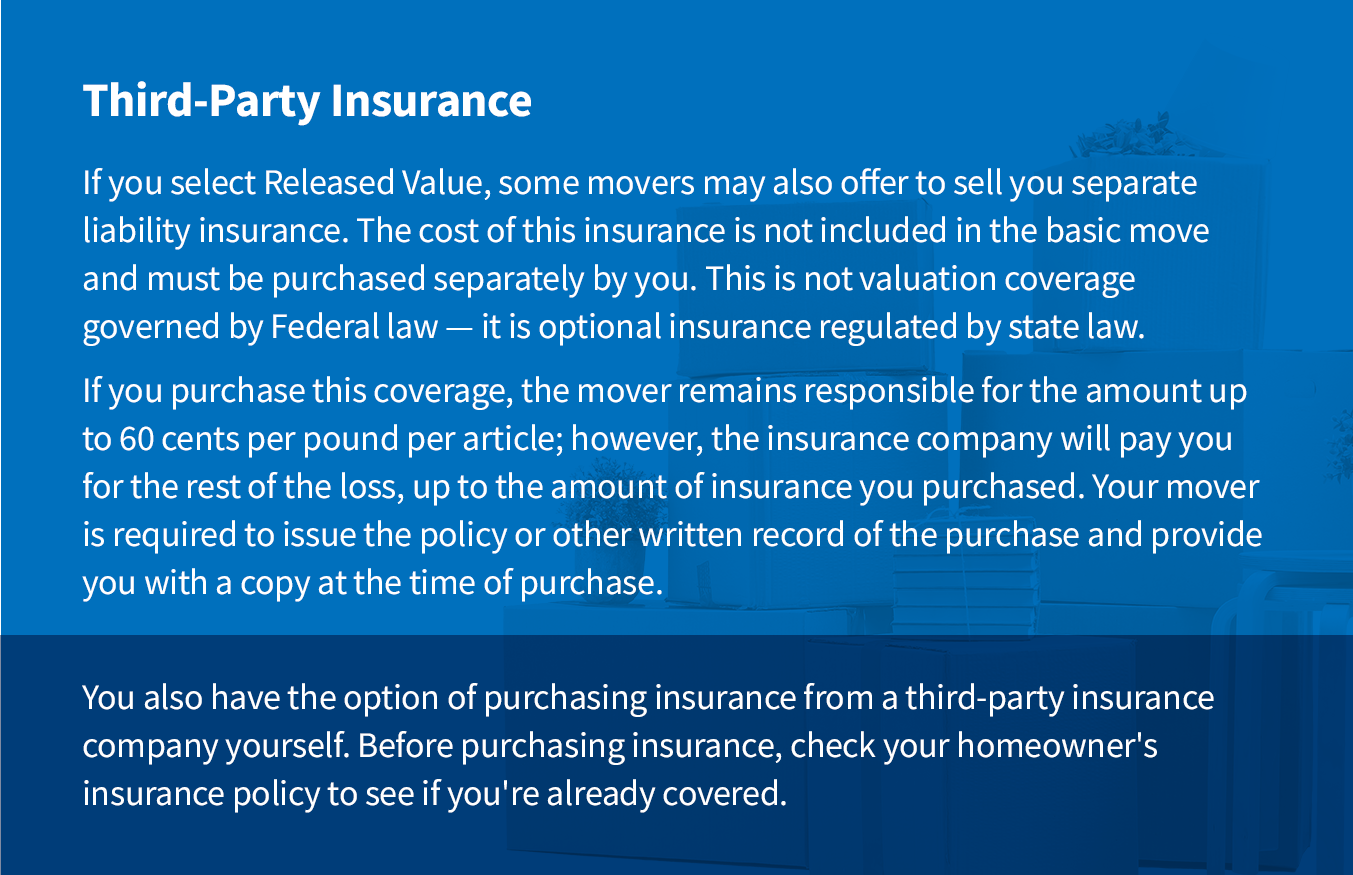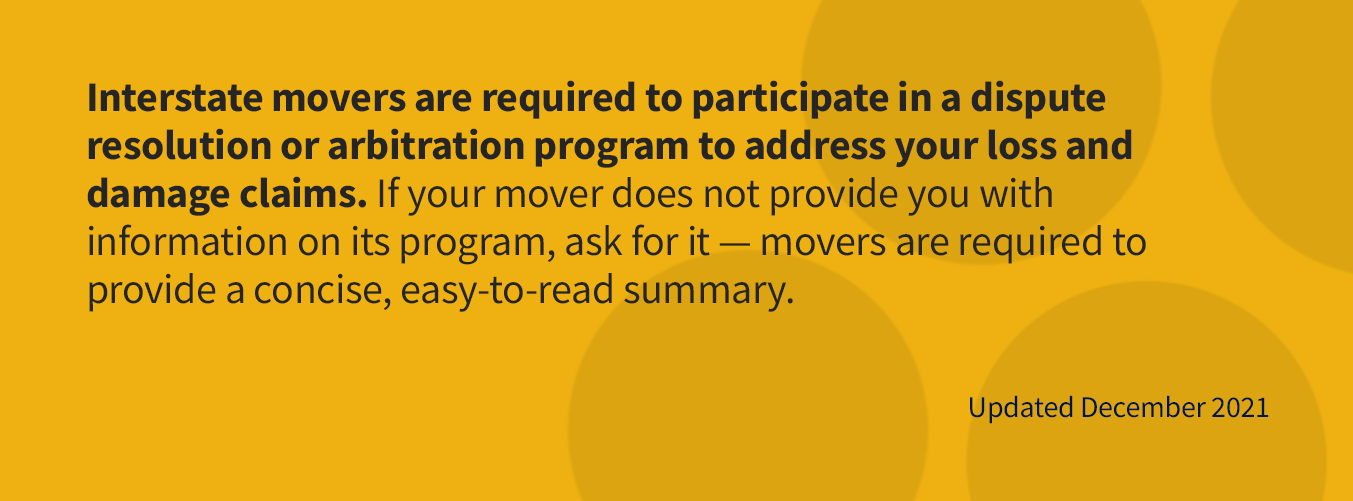Liability & Protection

Working with a household goods carrier (mover) can be nerve-racking. You are packing up all your treasured possessions – furniture, family, pictures, heirlooms, antiques, children’s toys – and handing them over to strangers to load into a truck. While most moves go smoothly, accidents do happen, and some items may be lost or damaged during shipment.
Your mover is responsible for the value of the goods you asked them to transport. You can read about the two types of liability below or in the Your Rights and Responsibilities When You Move booklet movers are required by Federal regulations to provide when you move from one state to another.
What are your options?
Under Federal law, interstate movers must offer two different liability options referred to as valuation coverage: Full Value Protection and Released Value.
Full Value Protection
Under Full Value Protection, your mover is responsible for the replacement value of lost or damaged goods in your entire shipment. This is the more comprehensive, but also more expensive, option for protecting your belongings. Unless you choose the Released Value option, described below, your mover will automatically move your belongings under this level of liability.
While moving, if any of your items are lost, destroyed, or damaged, your mover will offer to do one of the following for each item:

Under this option, movers are allowed to limit their legal responsibility to loss or damage to items of “extraordinary value”, meaning items that are valued more than $100 per pound (such as jewelry, china, or furs). However, if you specifically list these items on the shipping documents, your mover is still responsible for their safe delivery. Ask your mover for a written explanation of this limitation before your move.

The exact cost for Full Value Protection varies by mover and may be subject to various deductible levels of liability that can reduce your cost. Ask your mover for written details of their Full Value Protection plan.
Released Value Protection
Released Value Protection is the most economical option because it doesn’t cost anything. It is offered by movers at no additional charge, but the protection is minimal. Under this option, the mover is responsible for no more than 60 cents per pound per article. For example, if your mover lost or damaged a 50 inch TV weighing 25 pounds, you would only receive $15 (60 cents x 25 pounds).
If you choose this option, you must sign a specific statement on the bill of lading or contract agreeing to it. Just remember that you will only be compensated according to the weight of the item, not its actual value. If you do not select Released Value Protection, your shipment will automatically be transported at the Full Value Protection. 

If you're moving within your state...
Each state may have its own rules and regulations governing moves within the state. Check with your state, county or local consumer affairs agency or state moving association if you're moving to a new location within the same state.
Keep in mind...
Some of your actions may limit your mover's liability. These include:
- Packing perishable, dangerous or hazardous materials in your household goods without your mover's knowledge.
- Packing your own boxes. You may consider packing your own household goods articles to reduce your costs, but if the articles you pack are damaged, it may be more difficult to establish your claim against the mover for the boxes you pack.
- Choosing Released Value coverage when your household goods are valued at more than 60 cents per pound per article.
- Failing to notify your mover in writing about articles of extraordinary value.
- Signing a delivery receipt for your household goods if it contains any language about releasing or discharging your mover or its agents from liability. Strike out this kind of language.
- Failing to report loss and damage promptly. You have nine (9) months following the date of delivery of your shipment to file a written claim with your mover.

